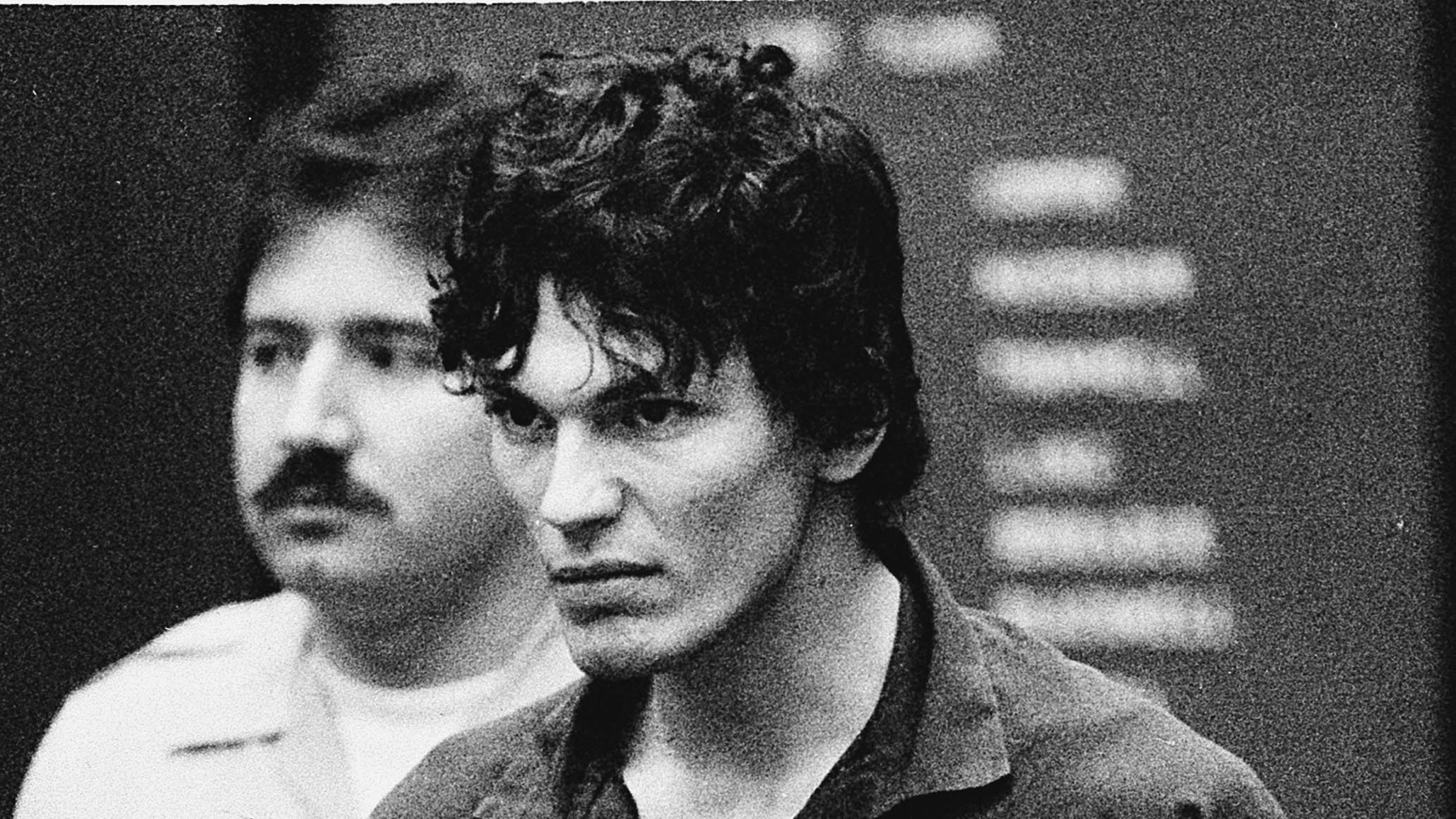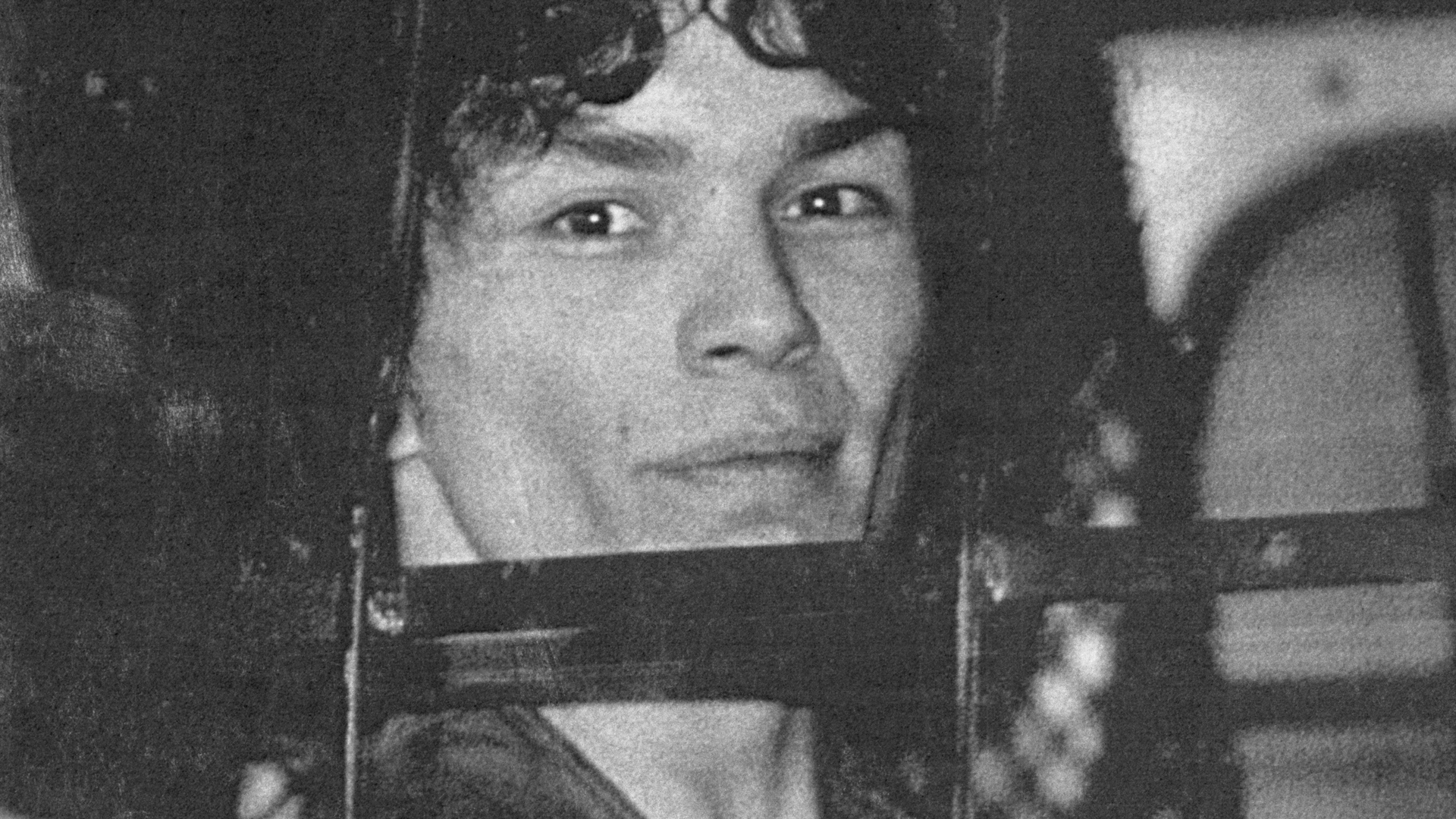Exploring The Grim Reality: Richard Ramirez Crime Scene Photos And Their Legacy
The name Richard, as we know, carries a rich history, often linked to figures of power and leadership, like kings such as Richard the Lionheart, a name signifying a "brave ruler." It's a classic choice, deeply rooted in Germanic origins, and has certainly stood the test of time, you know, appearing in many languages and cultures. So, it feels like a stark, almost unsettling contrast when that very name becomes forever associated with one of the most terrifying figures in criminal history: Richard Ramirez.
This individual, known infamously as the "Night Stalker," unleashed a wave of terror across California during the mid-1980s. His crimes were brutal, seemingly random, and left communities gripped by fear. People still talk about it, really, even today, decades later.
For many, the mention of Richard Ramirez immediately brings to mind the chilling details of his actions. A significant part of understanding the sheer scale of his horrific spree involves looking at the evidence left behind. This article will delve into the somber subject of **richard ramirez crime scene photos**, exploring their role in the investigation, the types of evidence they captured, and why there's still a considerable interest in these grim records, as a matter of fact.
Table of Contents
- Richard Ramirez: A Brief Overview
- The Night Stalker's Trail of Terror
- The Nature of the Crime Scenes
- Forensic Evidence and the Investigation
- The Importance of Crime Scene Photography
- The Public's Enduring Interest
- Ethical Considerations and Sensitivity
- Frequently Asked Questions About the Ramirez Case
Richard Ramirez: A Brief Overview
Richard Leyva Ramirez was a very disturbing individual who became one of America's most notorious serial killers. His actions terrorized residents, particularly in Los Angeles and San Francisco, during a rather intense period in 1984 and 1985.
Born in El Paso, Texas, Ramirez had a troubled upbringing, which many believe contributed to his later violent tendencies. His crimes were marked by extreme cruelty, involving murder, sexual assault, and burglary, often committed in the dead of night, so he earned the moniker "Night Stalker."
Personal Details and Bio Data of Richard Ramirez
| Full Name | Richard Leyva Ramirez |
| Born | February 29, 1960 |
| Died | June 7, 2013 (at age 53) |
| Place of Birth | El Paso, Texas, U.S. |
| Cause of Death | Complications from B-cell lymphoma |
| Known For | Serial killer, rapist, burglar |
| Nickname | The Night Stalker |
| Years Active | 1984–1985 |
| Victims | 13 confirmed murders, numerous assaults and burglaries |
| Status | Died on Death Row |
The Night Stalker's Trail of Terror
The Night Stalker's crime spree spanned over a year, leaving a horrifying trail across Southern California. His attacks were particularly frightening because they seemed to lack any clear pattern in terms of victim type or location, making everyone feel vulnerable, you know.
He would typically break into homes late at night, surprising residents as they slept. The sheer randomness of his choices, from young children to elderly couples, added to the widespread panic, so people really didn't know who might be next.
Police departments across different jurisdictions struggled to connect the dots initially, as the crimes occurred in various areas. This made the investigation incredibly complex, as a matter of fact, requiring immense coordination among law enforcement agencies.
The Nature of the Crime Scenes
The scenes left by Richard Ramirez were, quite frankly, horrific. They showed a profound disregard for human life and property. Each location told a story of terror and violence, and officers had to process them very carefully, you know.
Investigators arriving at these sites faced a truly grim picture. There was often significant physical damage, signs of struggle, and, sadly, the presence of victims who had endured unimaginable suffering. It was a very challenging environment for anyone to work in, really.
The goal at each scene was to gather every piece of information possible, no matter how small. This included documenting the layout, the condition of the victims, and any items left behind or disturbed. This careful work was quite important, as you might imagine, for building a case.
Forensic Evidence and the Investigation
Forensic evidence played a truly pivotal role in eventually identifying and capturing Richard Ramirez. The meticulous collection of clues at each crime scene was absolutely essential, you see, for piecing together his pattern.
Detectives and forensic specialists carefully searched for anything that could link the crimes or point to the perpetrator. This often involved looking for fingerprints, shoeprints, fibers, and even tool marks left from forced entry, so every little detail mattered.
One of the most significant pieces of evidence that helped lead to Ramirez's capture was a partial shoeprint. This particular print, left at multiple scenes, was unique to a specific brand and model of athletic shoe, a very distinct pattern, you know. This helped narrow down the search considerably, which was a big step.
Another crucial element was the recovery of fingerprints. Though Ramirez tried to avoid leaving them, a single clear print found on a car at one of the later crime scenes proved to be the breakthrough needed. This print was put into a statewide database, and it was a match, which was quite a moment, you know.
The combination of these physical clues, along with victim testimony and a description of a distinct vehicle, slowly but surely painted a picture of the Night Stalker. It was a long process, but the evidence spoke volumes, as a matter of fact.
The Importance of Crime Scene Photography
Crime scene photography is a critical tool in any major investigation, and for the Richard Ramirez case, it was absolutely indispensable. These photos serve as a permanent visual record of the scene as it was found, before anything is moved or altered, so they are incredibly valuable.
The images capture the precise layout of the area, the position of victims, the location of evidence, and the overall state of the environment. This helps investigators reconstruct events later, which is quite important for understanding what happened, you know.
For the Night Stalker crimes, these photographs documented the extreme violence and the distinct patterns of his attacks. They showed how he often ransacked homes, the specific types of injuries inflicted, and even the unsettling symbols he sometimes left behind, which was a very disturbing aspect of his crimes.
In court, these photos become powerful pieces of evidence. They help juries visualize the horror of the crimes and understand the context of the physical evidence presented. A picture can truly convey a thousand words, especially in such a serious setting, you know, and they certainly did here.
They also serve as a reference for forensic experts who might not have been at the scene themselves. By studying the photographs, specialists can analyze blood spatter patterns, entry points, and other details to draw conclusions about the events that transpired. It's a fundamental part of the investigative process, really.
The Public's Enduring Interest
Decades after his capture and death, there remains a significant public interest in Richard Ramirez and his crimes, including the **richard ramirez crime scene photos**. This curiosity often stems from a desire to understand the psychology behind such extreme evil, or just a general fascination with true crime stories, you know.
For some, looking at these materials is part of a broader effort to comprehend the darkest aspects of human behavior. It's a way to confront the reality of what happened and to learn from it, in a way, even if it's uncomfortable.
Documentaries, books, and online discussions continue to explore the Night Stalker case, keeping it in the public consciousness. This sustained interest, arguably, highlights the lasting impact of his reign of terror on communities and the collective memory, as a matter of fact.
It's also worth noting that the case was a pivotal moment in forensic science and inter-agency cooperation in California. The way law enforcement eventually worked together to catch him is, you know, a story of perseverance and dedication that still resonates.
Ethical Considerations and Sensitivity
When discussing or seeking out **richard ramirez crime scene photos**, it's incredibly important to approach the subject with a deep sense of respect and sensitivity. These images depict real suffering and loss, and they represent the worst moments in the lives of victims and their families, you know.
The primary purpose of such photos for law enforcement is to aid in justice, not to satisfy morbid curiosity. While public interest exists, it's vital to remember the human cost behind every image, as a matter of fact.
Responsible engagement with true crime material means prioritizing the dignity of those affected. This means focusing on the facts of the case, the investigative process, and the lessons learned, rather than sensationalizing the violence itself. We owe that to the victims, really.
Frequently Asked Questions About the Ramirez Case
What kind of evidence did Richard Ramirez leave behind?
Richard Ramirez left behind a variety of evidence at his crime scenes, which was absolutely crucial for his eventual capture, you know. This included distinct shoeprints from a specific brand of athletic shoe, fingerprints, especially one key print found on a car, and sometimes even specific items like spent shell casings or tools used for forced entry. Investigators also collected hair, fibers, and other trace evidence, which was quite important, as a matter of fact, for linking him to multiple attacks.
How many victims did Richard Ramirez have?
Richard Ramirez was convicted of 13 murders, but he was linked to many more crimes, including numerous sexual assaults, attempted murders, and burglaries, you know. The exact total number of victims he attacked or terrorized is likely higher than the official murder count. His spree created widespread fear and affected countless lives across Southern California, so the impact was very broad, really.
How did police use forensics to identify Richard Ramirez?
Police used a combination of forensic techniques to identify Richard Ramirez, which was quite a breakthrough, as a matter of fact. They collected fingerprints from various crime scenes, eventually getting a clear print from a stolen car. This print was then matched to a previous arrest record in a database. Additionally, distinct shoeprints left at multiple locations helped narrow down the type of suspect they were looking for. This forensic work, combined with witness descriptions and tips from the public, ultimately led to his identification and capture, which was a massive relief, you know. Learn more about forensic investigation methods on our site.
The legacy of Richard Ramirez is a grim reminder of human depravity, yet also a testament to the dedication of law enforcement and the power of forensic science. The **richard ramirez crime scene photos**, while disturbing, served as vital tools in bringing a terrifying reign of terror to an end. Understanding these aspects helps us grasp the full scope of this dark chapter in history, and you can find more details about historical cases like this here.
For further reading on the Night Stalker case and the investigation, you might find this resource helpful: Wikipedia: Richard Ramirez. This external link provides a comprehensive overview of his life and crimes, as a matter of fact.

‘Night Stalker’ Killer Richard Ramirez Dies at 53 - The New York Times

How the Night Stalker was caught, why Richard Ramirez wasn't executed

Richard Ramirez's Death: What Were the Final Days of the 'Night Stalker